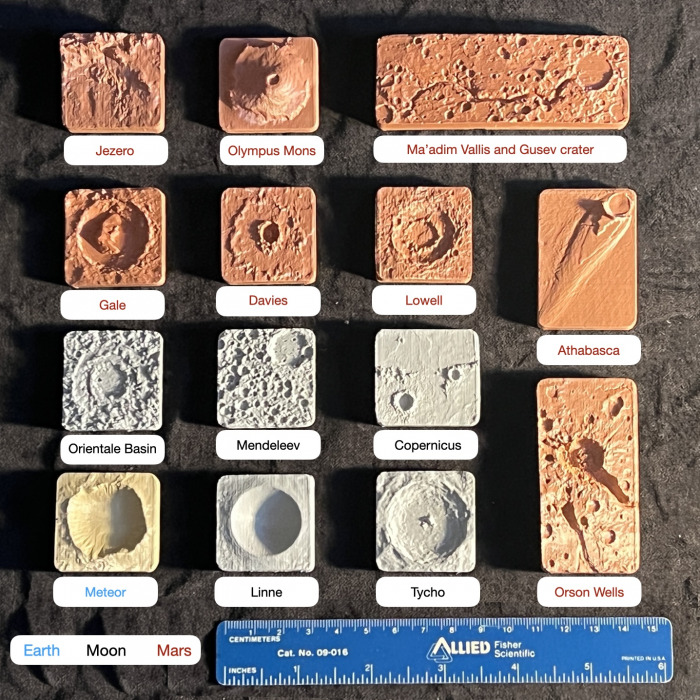Tactile models of planetary terrain are produced by the Teaching Teams program in UA’s Lunar and Planetary Lab. We combine 3D-printing technology with spacecraft data from NASA missions to produce tactile models of terrain on Earth, the Moon, and Mars (see collections of models below). These models are used to teach the blind, visually impaired, and other students who are tactile learners.
This project is a joint effort by Dr. Steve Kortenkamp in UA’s Lunar and Planetary Lab (PG4gdWVycz0iem52eWdiOnhiZWdyYXhuQG5ldm1iYW4ucnFoIj54YmVncmF4bkBuZXZtYmFuLnJxaDwvbj4=) and Dr. Sunggye Hong in UA’s College of Education, Visual Disabilities program (PG4gdWVycz0iem52eWdiOmZ0dWJhdEBuZXZtYmFuLnJxaCI+ZnR1YmF0QG5ldm1iYW4ucnFoPC9uPg==). See our paper, "Touching the Solar System," for more details.
Image above shows partial collection of full size 3D models, hemispheres, and spacecraft kits used in the program. Colors of models indicate the source, with desert tan for Earth's Meteor crater, grey for terrain on the Moon, and rusty red for Mars. For size reference, square models are about 15 cm x 15 cm (6x6 inches) and hemispheres are about 15cm (6 inches) diameter.

Image above shows collection of miniature tactile models. Labels indicate the name of the primary terrain feature modeled and color indicates the source object.
Please consider making a donation to the Teaching Teams program in the Lunar and Planetary Lab to help us produce additional models for middle and high school science teachers to use in their classrooms.

